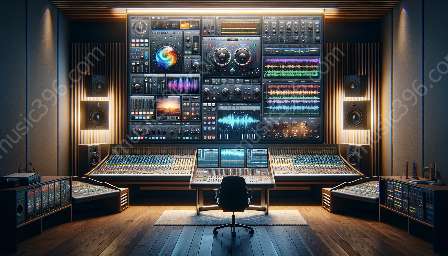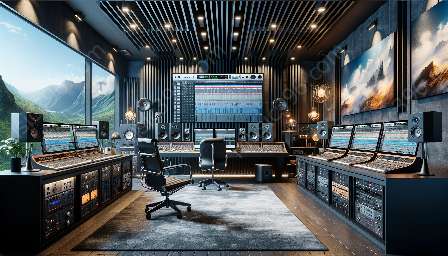Gain staging is a crucial aspect of music production, especially in the context of digital audio workstations (DAWs), mixing, and mastering. It involves setting the levels of each audio signal at various stages in the signal path to ensure optimal sound quality and to prevent unwanted distortion or noise. In this comprehensive guide, we will delve into the different methods for optimizing gain staging in DAWs, with a focus on how it relates to mixing and mastering.
The Importance of Gain Staging
Good gain staging is essential for achieving professional-grade mixes and masters. Proper gain staging helps to maintain a healthy signal-to-noise ratio, ensures that the audio signals are at the optimal levels for processing and recording, and prevents digital clipping and distortion. When done correctly, it can result in clearer, more dynamic, and better-balanced audio.
Understanding the Signal Flow
To effectively optimize gain staging in a DAW, it's crucial to understand the signal flow within the digital audio workstation. The signal path typically starts with the input sources such as microphones, instruments, or recorded audio. It then moves through various processing stages such as EQ, compression, and effects, before reaching the final output stage for mixing and mastering.
Optimizing Gain Staging During Recording
When recording audio into a DAW, it's important to set the input levels correctly to ensure that the signal is strong enough to capture the nuances of the performance without overloading the input. Most DAWs provide level meters to monitor the input levels, and it's advisable to aim for an average level that peaks around -12 dB to -6 dB. This allows sufficient headroom for any unexpected peaks and ensures a clean recording with ample dynamic range.
Setting Levels for Processing
As the audio signals move through the processing stages, it's crucial to adjust the levels at each stage to prevent signal degradation and maintain the integrity of the sound. For instance, when applying EQ or compression, the input and output levels of the processors should be adjusted to avoid excessive gain reduction or amplification. Keeping an eye on the overall signal level and making necessary adjustments can help achieve optimal processing without introducing unwanted artifacts.
Gain Staging in Mixing
During mixing, gain staging plays a vital role in balancing the various elements of the mix. Setting the levels of individual tracks and ensuring that they complement each other in the mix is essential for achieving clarity and definition. Furthermore, judicious use of gain and fader adjustments can help create a cohesive and dynamic mix while preventing oversaturation or muddiness.
Optimizing Levels for Mastering
When preparing the mix for mastering, it's important to pay close attention to gain staging to ensure that the final master is not only at an appropriate level but also free from any unwanted distortion or artifacts. Using a dedicated mastering limiter or maximizing plugin, the signal levels can be carefully controlled to achieve the desired loudness without sacrificing the overall sound quality.
Methods for Optimizing Gain Staging
There are several methods and best practices for optimizing gain staging in a DAW:
- Use Gain Plugins: DAWs often provide gain control plugins that allow users to adjust the gain of individual tracks or the master bus. These plugins can be used to make precise level adjustments without altering the original audio.
- Monitor Levels Throughout the Signal Path: Continuously monitoring the levels at various stages of the signal path can help identify any potential issues and ensure that the gain is appropriately set at each stage.
- Aim for Adequate Headroom: Maintaining sufficient headroom throughout the signal chain prevents digital clipping and distortion. Aim to keep the peak levels well below 0 dB to allow for additional processing and mastering.
- Calibrate Monitoring Systems: Ensure that the monitoring system, including studio monitors and headphones, is properly calibrated to accurately represent the audio levels. This helps in making informed decisions regarding gain staging during mixing and mastering.
Conclusion
Optimizing gain staging in a DAW is a critical aspect of achieving professional-quality mixes and masters. By understanding the importance of gain staging, mastering the signal flow, and implementing the various methods for optimizing gain staging, producers and engineers can elevate the overall sound quality of their DAW-based productions. Whether it's recording, mixing, or mastering, paying attention to gain staging can lead to cleaner, more transparent, and impactful audio results.









